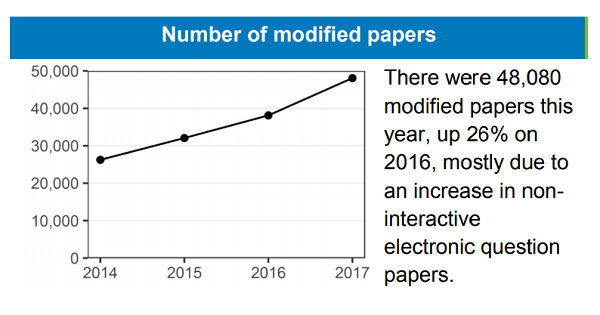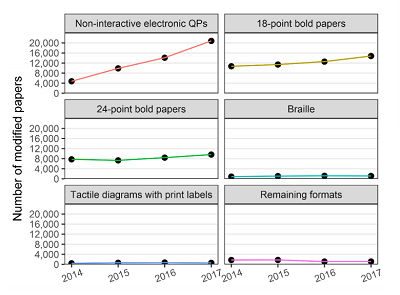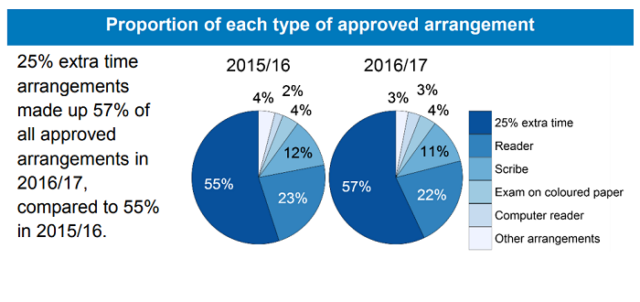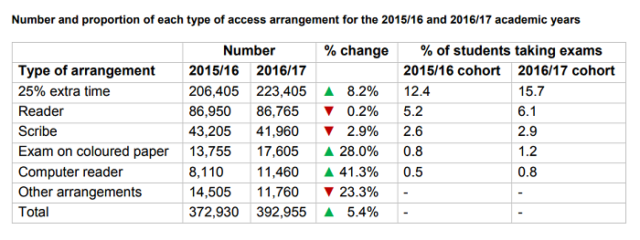Ofqual has recorded a dramatic 26-per-cent increase in the proportion of GCSE, AS and A-level exam papers that were adapted to make them accessible for candidates with a disability, illness or special educational needs in 2016/17.
This leap is due largely to a rise in the use of “non-interactive” electronic question papers, it claims.

According to data released today, 48,080 papers were modified in the summer 2017 exams, to ensure that ensure no pupils were unfairly disadvantaged when sitting their exams. This was up from 38,115 the previous year.
Modified papers are prepared for pupils with, for example, visual impairments or language comprehension disorders, in order to fairly enable them to show their skills, knowledge and understanding.
The number of non-interactive electronic question papers used in 2017 was 20,815, an increase of 47.5 per cent on the year before.
This was by far the most common type of adapted exam paper. The second most popular were papers printed in 18-point bold text, which rose from 12,570 in 2016 to 14,785 in 2017 – a 17.6-per-cent change.

The number of braille papers and papers with tactile diagrams decreased by 4.9 per cent and 17.2 per cent respectively.
Overall, there were 392,955 approved access arrangements in 2016-17, also an increase of five per cent on 2015/16.
There was also a small rise of one per cent in the centres with approved access arrangements: 91 per cent (5,380) of all centres had approved access arrangements for one or more of their students, compared with 90 per cent last year.
Which access arrangements were used most?
Gaining 25 per cent more time in exams is still the most popular type of access arrangement, making up 57 per cent of all approved arrangements, compared with 55 per cent last year.

A total of 15.7 per cent (223,405) of pupils taking exams in 2016-17 had 25 per cent more time, up from 12.4 per cent the previous year.
There was a 41.3 per cent increase in the number of pupils using a computer reader for their exams in 2016-17, up from 8,110 to 11,460.
There was also a sharp rise in the number of pupils using exams on coloured paper, up from 13,755 to 17,605 (28 per cent).
The number of pupils using a scribe in their exams declined by 2.9 per cent to 41,960 in 2016-17, while the number of pupils using a reader dropped by 0.2 per cent to 86,765.








Your thoughts